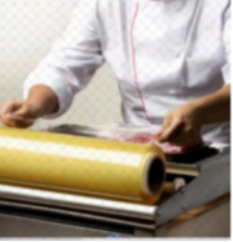Sleek Black Packaging Paper for Elegant and Eco-Friendly Product Presentation
The Rise of Black Packaging Paper A Sustainable Trend in Modern Packaging
In recent years, the influence of sustainability on consumer products has become more pronounced, leading businesses to seek innovative alternatives that reflect eco-conscious values. Among these alternatives, black packaging paper has emerged as a stylish yet sustainable option, captivating brands and consumers alike. This article delves into the various dimensions of black packaging paper, its aesthetic appeal, sustainability benefits, and future potential in the packaging industry.
Aesthetic Appeal
The immediate allure of black packaging paper is its striking aesthetic. Its matte finish conveys sophistication and elegance, making it a popular choice for luxury brands. Products packaged in black paper create a sense of mystery and intrigue, effectively capturing consumer attention. This visual distinctiveness allows brands to stand out in a crowded market, inviting customers to explore products further. Whether it’s employed for high-end cosmetics, gourmet food, or artisanal goods, black packaging paper adds a layer of sophistication that resonates with consumers looking for premium experiences.
Moreover, black packaging paper serves as a versatile canvas for various design elements. Brands can leverage contrasting colors and bold typography to create eye-catching graphics, enhancing their branding efforts. This adaptability means that businesses can convey their unique identity while remaining environmentally responsible. As packaging plays a crucial role in first impressions, using black packaging paper optimizes both visual appeal and brand recognition.
Sustainability Benefits
Beyond aesthetic considerations, black packaging paper aligns seamlessly with the growing demand for sustainable practices in the packaging industry. As consumers become more environmentally conscious, they prefer products that are packaged in materials that have minimal impact on the planet. Black packaging paper can be produced from recycled materials and is often recyclable itself, reducing the overall carbon footprint of packaging operations.
black packaging paper

Furthermore, the production of black packaging paper tends to consume fewer resources compared to traditional packaging materials. Many manufacturers are exploring innovative methods to incorporate environmentally friendly inks and finishes, ensuring that their packaging not only looks good but also meets sustainability standards. The use of eco-friendly adhesives and coatings further enhances its appeal as a sustainable packaging choice.
Another significant factor is the biodegradability of black packaging paper. Unlike plastic or non-biodegradable materials, paper products break down naturally, contributing to lower landfill waste. This characteristic becomes especially important as companies strive to adhere to circular economy principles—minimizing waste and maximizing resource efficiency.
Conclusion The Future of Black Packaging Paper
As we look to the future, the trend of black packaging paper is poised to continue growing. With the shift toward sustainability becoming increasingly important in consumer choices, brands that adopt eco-friendly packaging solutions will likely gain favor among consumers. Black packaging paper offers an exceptional balance of style and sustainability, making it an optimal choice for businesses aiming to enhance their brand image while remaining environmentally responsible.
Additionally, as advancements in technology and materials science continue to evolve, we can expect to see even greater innovations in the production and application of black packaging paper. This evolution will not only make it more accessible to a broader range of businesses but also encourage further integration of sustainable practices in packaging.
In summary, black packaging paper is more than just a trendy choice for brands; it symbolizes a broader commitment to sustainability and environmental stewardship. As consumers increasingly prioritize eco-friendly options, the adoption of black packaging paper will reflect the growing awareness of the importance of responsible consumerism, paving the way for a greener future in the packaging landscape.
-
Self Seal Bags: Secure, Clear, and Customizable Packaging for Every IndustryNewsAug.15,2025
-
Paper Cups: Bulk Solutions for Events, Cafés, and Eco-Friendly ServiceNewsAug.15,2025
-
Laminated Bags: Durable, Customizable Packaging for High-Impact BrandsNewsAug.15,2025
-
Grocery Bags: Smart, Sustainable, and Scalable Solutions for RetailersNewsAug.15,2025
-
Drawstring Bags: Versatile, Customizable, and Cost-Effective for Bulk UseNewsAug.15,2025
-
Disposable Gloves: Wholesale Solutions for Safety, Hygiene, and EfficiencyNewsAug.15,2025
-
Have the freedom of customizing your custom mailers any way you want! Our dedicated packaging support will help deliver you the mailing experience you need to elevate your shipping experience to the next level! Start making a strong impression on your customers and stand out from your competitors! -
LIYA uses high quality raw materials which directly purchased from large enterprises domestic and overseas such as PetroChina, Sinopec, Sabic, Equate, ExxonMobil, Dow Chemical, Total, and Borouge, ensuring the price advantage and quality of the raw materials. -
LIYA uses high quality raw materials which directly purchased from large enterprises domestic and overseas such as PetroChina, Sinopec, Sabic, Equate, ExxonMobil, Dow Chemical, Total, and Borouge, ensuring the price advantage and quality of the raw materials.





